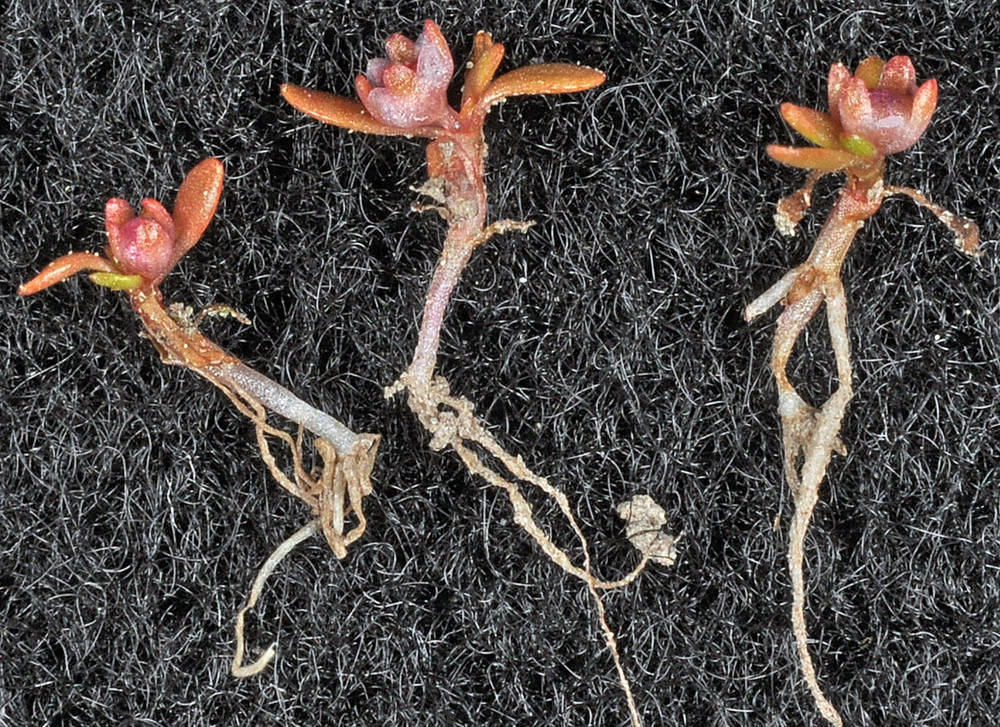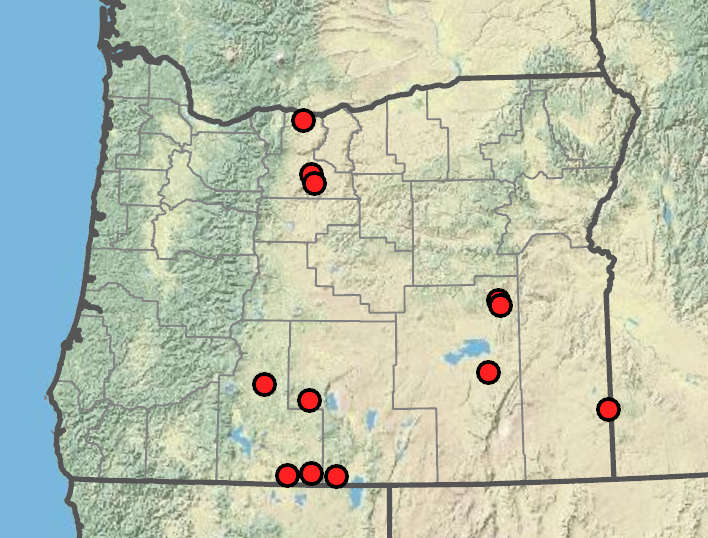Elatine rubella
Elatine californica
red-stem waterwort, southwestern waterwort
California waterwort
green to reddish green;
internodes 1–7 mm.
light green to green (reddish green);
internodes 2–12 mm.
blades oblanceolate, 3–7 mm;
petioles 0.5–1 mm.
blades spatulate or elliptic, 3–12 mm;
petioles 0.5–6 mm.
peduncles straight; < 1.5 mm.
peduncles recurved, usually > 1.5 mm.
0.1–0.5 mm;
sepals 3, sometimes 1 smaller;
petals 3;
stamens 3;
carpels 3.
(0.1)1.5–4 mm;
sepals 4, sometimes 1 smaller;
petals 4;
stamens 8;
carpels 4.
compressed globose to globose, 3-locular.
disk-shaped to compressed globose, 4-locular.
15–30, slightly curved to nearly straight; ~0.5 mm;
surface pits 14–23 per row; length ~2 × their width.
16–24, highly curved to nearly circular, 0.5–0.7 mm;
surface pits 20–27 per row; length 1.2–2 × their width.
Elatine rubella
Elatine californica
Emergent form in mudflats near reservoirs, submersed form in marshes. Flowering Apr–Jul. 1100–1600 m. BR, Owy. CA, ID, NV, WA; western North America. Native.
Collections of Elatine rubella often are misidentified as E. chilensis, and vice versa, because of high similarity between the two species and the seed features not being readily visible. The emergent form of this species usually has more rigid stems and shorter internodes.
In or near puddles, ponds, reservoirs, lakes, and marshes. Flowering Mar–Aug. 50–1600 m. Col, ECas. CA, ID, NV, WA; northeast to MT, southeast to NM, south to Mexico. Native.
Elatine californica can be distinguished from all other Elatine species in the Unites States by its four-merous flower parts and nearly circular seeds. Both morphological and molecular analyses (Razifard et al. 2017) support a close affinity between E. californica and E. hydropiper, which occurs in Central Asia, Europe, and North Africa.
Hamid Razifard, Gordon Tucker, Donald Les
Hamid Razifard, Gordon Tucker, Donald Les
- Local floras:
BC,
CA,
OR
- Local Web sites:
CalFlora,
CalPhotos,
Flora NW,
PNW Herbaria
WildflowerSearch
iNaturalist (observations)
USDA Plants Database
- LBJ Wildflower Center
- SEINet
- Plants of the World Online
- Encyclopedia of Life
- Wikipedia
- Google Image Search
- Local floras:
CA,
OR,
WA
- Local Web sites:
CalFlora,
CalPhotos,
Flora NW,
PNW Herbaria
WildflowerSearch
iNaturalist (observations)
USDA Plants Database
- LBJ Wildflower Center
- SEINet
- Plants of the World Online
- Encyclopedia of Life
- Wikipedia
- Google Image Search




